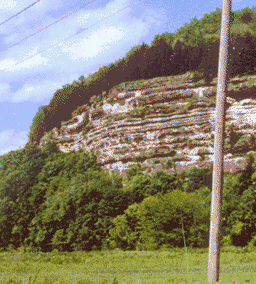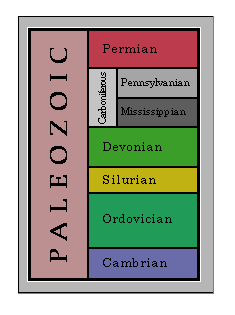The Paleozoic Era
543 to 248 Million Years Ago


The Paleozoic is bracketed by two of the most important events in the history of animal life. At its beginning, multicelled animals underwent a dramatic "explosion" in diversity, and almost all living animal phyla appeared within a few millions of years. At the other end of the Paleozoic, the largest mass extinction in history wiped out approximately 90% of all marine animal species. The causes of both these events are still not fully understood and the subject of much research and controversy. Roughly halfway in between, animals, fungi, and plants alike colonized the land, the insects took to the air, and the limestone shown in this picture was deposited near Burlington, Missouri.
The Paleozoic took up over half of the Phanerozoic, approximately 300 million years. During the Paleozoic there were six major continental land masses; each of these consisted of different parts of the modern continents. For instance, at the beginning of the Paleozoic, today's western coast of North America ran east-west along the equator, while Africa was at the South Pole. These Paleozoic continents experienced tremendous mountain building along their margins, and numerous incursions and retreats of shallow seas across their interiors. Large limestone outcrops, like the one shown above, are evidence of these periodic incursions of continental seas.
Many Paleozoic rocks are economically important. For example, much of the limestone quarried for building and industrial purposes, as well as the coal deposits of western Europe and the eastern United States, were formed during the Paleozoic.
Click on the buttons below to learn more about the Paleozoic Era.




 |
Paleozoic to visit its exhibit! The chart at left shows the major subdivisions of the Paleozoic Era. This image is mapped to take you to our exhibits on each of these subdivisions. Each of these exhibits covers a period in greater detail. The Paleozoic Era occurs between the Proterozoic and the Mesozoic. |


